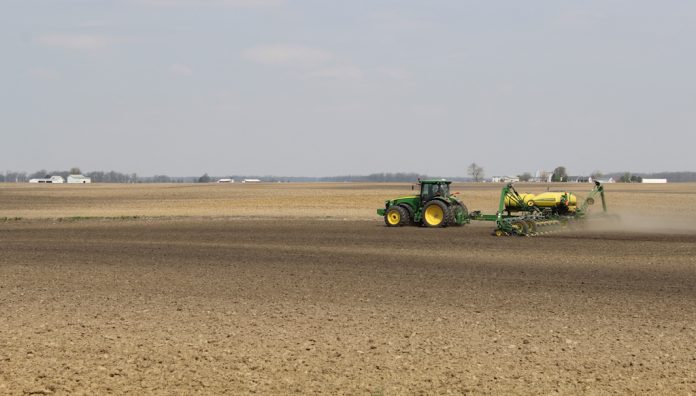The U.S. Department of Agriculture reports came and went March 31, and the market seemed to find them easy to digest.
After some positioning before the reports saw the market go down, then recover a little, grain prices are mostly higher as we start the month of April.
Planting report
The USDA gave us the long-awaited March 31 prospective planting report and the March 1 grain stocks report, and they generally spit out the negative parts and digested the positives.
May corn futures finished the day of the report March 31 by closing up 11 cents, to $6.60 1/2, with a high four cents above that. We lost almost three cents April 3, after the March 31 enthusiasm wore off a little. The December futures closed down a half, at $5.66 1/2 March 31, and was unchanged April 3.
The corn grain stocks were part of the story. The stocks were reported at 4.01 billion bushels, significantly under the average trade pre-report estimate of 7.47. Last year, we had 7.76 billion bushels on hand as we started the second half of the marketing year. That was seen as bullish, and helped the nearby prices.
The planting intentions, however, reported 92 million acres, a full one million acres above the USDA Outlook meeting in February. That planting would be 3.4 million over last year but was anticipated by traders. They were expecting 90.88 million acres. That was the justification for the flat response in the new crop December futures.
It is probably good that prices did not decline in the new crop, but we have a long way to go to get the 92 million acres planted. If you look at the state-by-state planting expectations, it is the northern Midwest that looks to increase acres, especially states that are more in the northern Plains.
North Dakota by itself is expected to increase acres by 800,000 acres! It is amazing to me how North Dakota has become a leading corn state, when it used to be considered too far north for corn.
Changes in tillage practices and better hybrids has changed that, along, perhaps, with faster harvest equipment that limits the danger of late harvests. However, I am being told that the northern states have record snow cover and little hope of an early spring that would help push along corn acres. It remains to be seen if all the corn gets planted in places like Minnesota and North Dakota.
Soybeans
Soybeans showed the biggest change in price. The May futures closed 31 cents higher March 31 and traded at one point almost 40 cents higher, at $15.13 3/4. We only lost a quarter-cent of that April 3.
The November soybean futures gained 16 1/4 cents March 31 and added 13 cents April 3, trading as high as $13.38 3/4. The whole last 10 days was positive for the soybeans, which traded four higher closes before breaking in the middle of the week. They then used the March 31 reports to make big gains.
The prices were helped by lower soybeans stocks than expected. We have 1.685 billion bushels compared to a 1.742 billion trader guess. Last year at this time, we had 1.932 billion. This means we are getting ourselves squeezed into being short soybeans and will probably see Brazilian beans come into the Southeast feeder market. It should be noted that this is the smallest stocks number in six years.
Adding to the hype in the bean markets was the reality of a USDA planted acres estimate that was smaller than expected. The trade was looking for 88.242 million acres and got 87.5 million. That was virtually identical to the last year planting of 87.45 million acres.
Once again, a lot of the increase in acres comes from North Dakota, which is planning to increase planting of soybeans by 850,000 acres. It can be assumed that corn and soybean acres in North Dakota are coming out of what would normally go into spring wheat.
This planting shortage overall would be a bigger deal if the Brazilians were not expected to harvest a record crop. The Argentinians are finishing the crop with continued dry weather and expect little more than half a crop, but South America as a whole, on the strength of Brazilian production, with a little help from some neighbors, will have a record production year.
Wheat
The excitement in wheat markets over the last week is mostly in the emergence problem areas of hard red winter wheat. The HRW Kansas City futures market was up 62 cents. The Chicago soft red winter crop was unchanged in price, as our crop is emerging in great condition.
Other news that could affect corn or wheat prices had to do with several big grain companies that have recently announced that they will stop trading or originating grain from Russia.
Cargill made an announcement in the middle of the week that they would not originate grain at a Black Sea terminal but would carry grain from some Russian ports. I am not sure of the impact here.
Later, Viterra, the largest Canadian grain handler, said they would discontinue marketing grain out of Russia starting July one. Louis Dreyfus, a huge multi-national trader headquartered in the Netherlands, announced April 3 that they were ceasing Russian grain exporting as of July 1.











